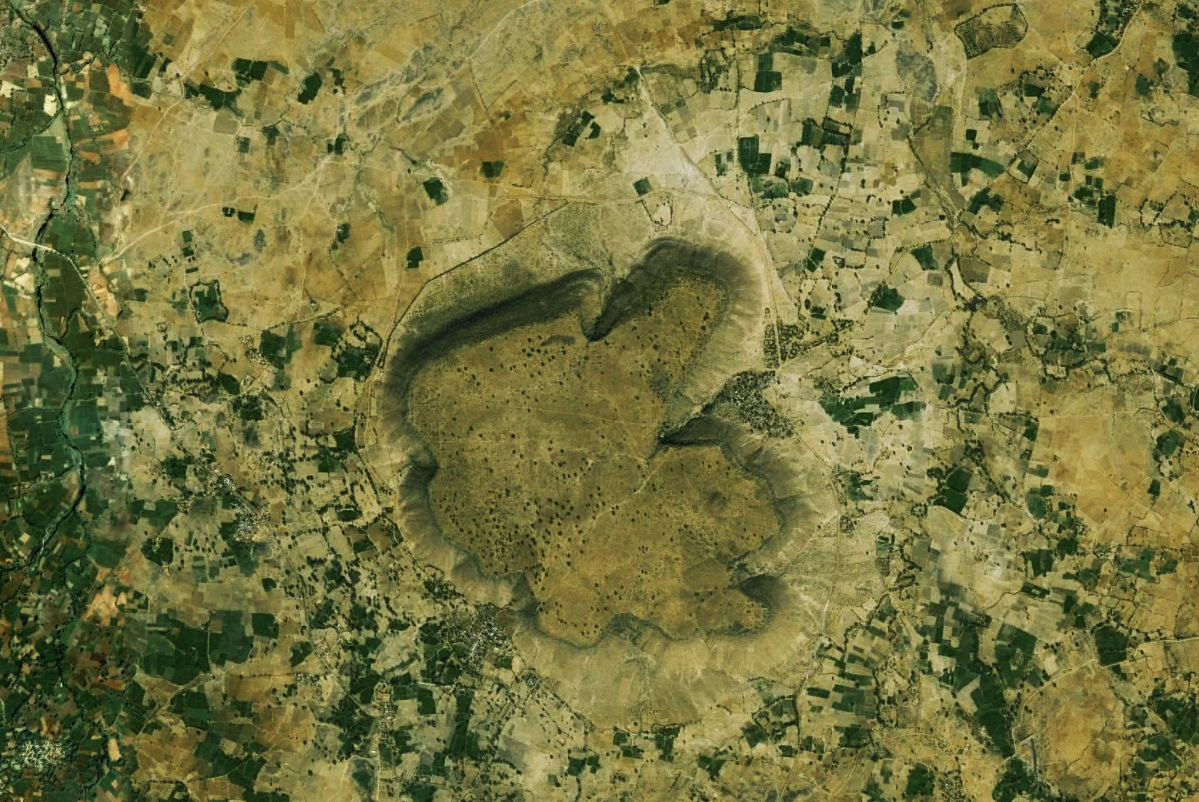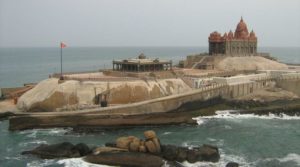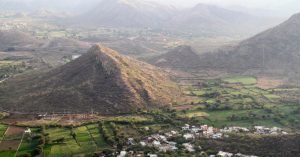Lonar Lake Is Not the Only Meteoric Crater in India. There Are More Amazing Ones Too!
Though years of erosion have made it difficult to determine the exact age of the impact and the exact size of the meteorites, craters are enduring testaments to direct hits by otherworldly rocks. Here is all you need to know about India's prehistoric meteoric craters.

Meteoric impact craters are among the most interesting geological structures on our planet. While most of these craters have been eroded away by natural processes over the vast expanse of geological time, many of these ‘astroblemes’ (literally meaning star wound in Greek) still remain in the form of a circular geological scar of crushed and deformed bedrock.

Photo Source
Scientists have discovered three deep scars in the earth’s crust in India that are believed to mark the remains of a meteorite crater. While the Lonar Lake is famous for being the world’s largest basaltic impact crater, the other two, Ramgarh and Dhala, are relatively unknown. There is also the fascinating theory about the genesis of the Shiva crater, a geological structure that consists of the Bombay High and the Surat Depression.
Though years of erosion have made it difficult to determine the exact age of the impact and the exact size of the meteorites, these craters are enduring testaments to direct hits by otherworldly rocks.
Here is all you need to know about India’s prehistoric meteoric craters.
1. Lonar Lake

Photo Source
Incredibly old at 50,000 years, the Lonar crater is the youngest and best preserved impact crater formed in basalt rock and is the only of its kind on earth. The crater was formed fifty-two thousand years ago, when a blazing ball of fire (a meteor that weighed over one million ton in deadweight) crashed into the earth at an estimated speed of 90,000 km per hour. It gouged a deep depression (1.8 km wide and 150 m deep) before erupting and spewing molten rock to create a magnificent crest on the rim. Over time, the jungle took over, and a perennial stream transformed the crater into a tranquil, emerald green lake.
Located in the Buldhana District of Maharashtra, the Lonar Lake is an exceptional ‘bowl of biodiversity’ and a wildlife sanctuary with a unique ecology that is vastly different from the surrounding flat landscape. A land-locked water body which is alkaline and saline at the same time, the Lonar Lake supports micro-organisms rarely found elsewhere on earth. Fringed by a lush jungle, the lake’s surroundings are peppered with fragments of minerals like maskelynite, and centuries-old abandoned temples that are now inhabited only by insects and bats.
For the uninitiated, maskelynite is a kind of naturally occurring glass that is only formed by extremely high-velocity impacts. According to NASA, this material’s presence and the crater’s situation in volcanic basalt makes Lonar a good analogue for impact craters on the surface of the Moon. Interestingly, the recently discovered bacterial strain (Bacillus odysseyi) from the crater site resembles the one found on Mars.
Also Read: #TravelTales: Move over Grand Canyon. India Has Its Own Spectacular Canyon & You Must Explore It!
2. Ramgarh Crater

Photo Source
The monotony of the vast flatlands in south eastern Rajasthan is broken by an conspicuous elevated circular structure near the Ramgarh village in Baran district. The Ramgarh crater, with a diameter of 2.7 km and an elevation of nearly 200 m elevation above surrounding terrain, can be easily spotted from a distance of 40 km. The small conical shaped peak situated at the centre of the crater is also the location of the ancient, beautifully sculptured Bandewra temple. The river Parvathi, which flows through the region, forms a tiny lake with radial drainage within the crater.
Compared to the Lonar crater, the structure of the Ramgarh crater has undergone much erosion – only a thin layer of ejecta (material that is forced or thrown out as a result of a meteor impact or a stellar explosion) covers the crater’s rim. The occurrence of lustrous magnetic spherules with high ratios of nickel and cobalt content in the ejecta have been documented by scientists. This gives credence to the theory that they were formed due to atmospheric outbursts during meteoric impact. However, while this unusual crater has attracted the attention of geologists since its discovery, a detailed multidisciplinary study to evaluate its origin, structure and lithology is yet to be made.
3. Dhala Crater

Photo Source
Located in the Shivpuri district of Madhya Pradesh, the Dhala crater is a heavily eroded crater that is at least 1.8 billion years old. While the centre of the crater is a mesa-like flatland, the rim is made up of impact melt rocks and granitoids. Along with diagnostic shock metamorphic features (geological changes caused due to deformation and heating during impact events), this confirms Dhala as a meteor impact structure.
According to studies, the Dhala impact structure has an apparent diameter of about 11 km – this measured diameter possibly represents a minimum estimate as a large part of the area is covered by alluvium. This makes the Dhala crater the eroded remnant of the largest impact structure currently known from the Indian subcontinent, and in fact, from the wider region between the Middle East and southeastern Asia.
4. Shiva Crater Theory

Put forward by Sankar Chatterjee, a professor at Texas Tech University, the Shiva crater hypothesis seeks to explain how dinosaurs were wiped off the face of the planet. The teardrop-shaped structure of the Shiva crater is believed to be in the Mumbai offshore region that includes the Bombay High and the Surat Depression.
According to the theory, a huge asteroid, nearly 40 km in diameter, crashed into the planet off the western coast of India (near Bombay High), creating a vast 500 km wide crater. Temperatures in the area rose rapidly, reaching several thousand degrees Celsius and releasing more energy than the world’s entire nuclear arsenal. Soon enough, this energy started devastating the atmosphere, rupturing the thin shell of air, water, soil and surface rock (including that of the Deccan Trap) that nurtures and sustains life. The result was destruction and mass extinction of the dinosaurs.
According to the scientist team behind the theory, the findings that favour this hypotheses are: the vast reserves of fossil fuels, both crude oil and natural gas; rich reserves of iridium and shocked quartz ( extremely rare in the Earth’s crust but more common in meteroids) and the lava flood that formed the Deccan Trap. However, the jury is still out on this theory (the search for more definitive evidence is still going on) and the Shiva crater is yet to be recorded on the Earth Impact database. If proven correct, this would be largest crater on earth.
You May Like: From Royalty to Relics: The Fascinating Story of India’s Dinosaur Princess, Aaliya Sultana Babi
Like this story? Have something to share? Email: contact@thebetterindia.
NEW! Log into www.gettbi.com to get positive news on Whatsapp.
This story made me
- 97
- 121
- 89
- 167
Tell Us More
We bring stories straight from the heart of India, to inspire millions and create a wave of impact. Our positive movement is growing bigger everyday, and we would love for you to join it.
Please contribute whatever you can, every little penny helps our team in bringing you more stories that support dreams and spread hope.



















